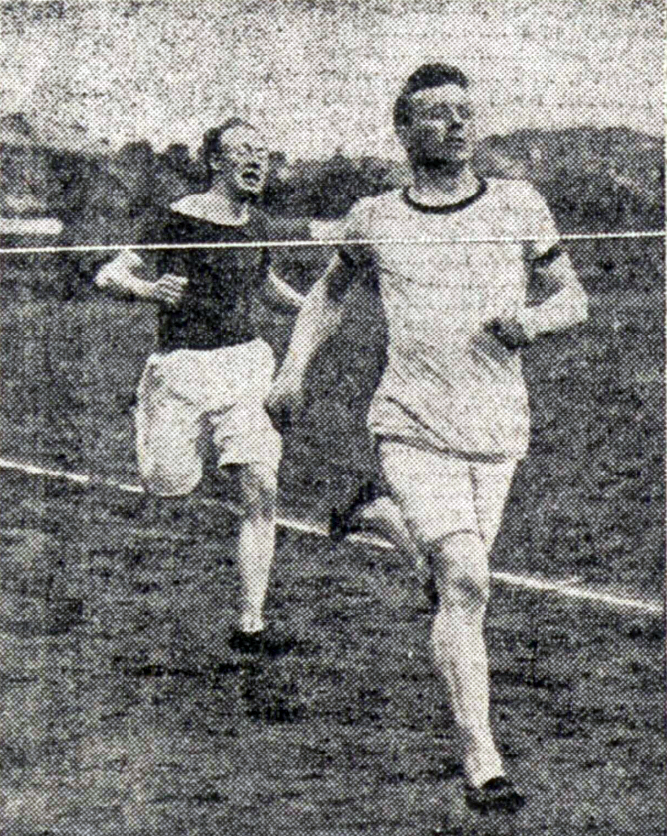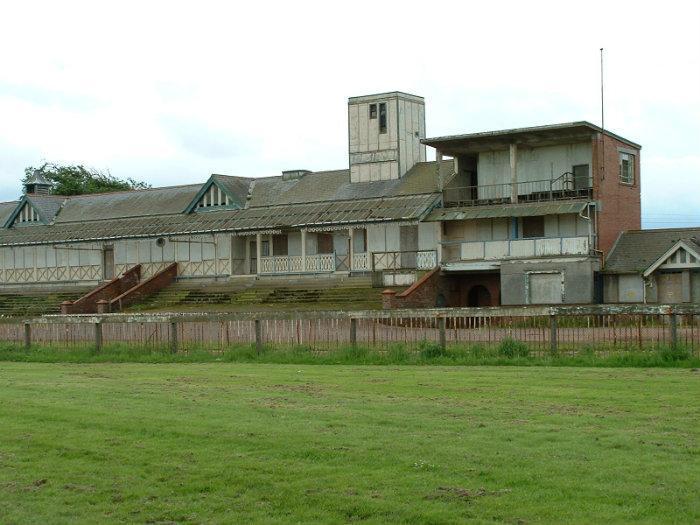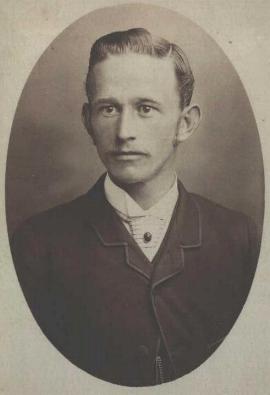
Sam Watt, his brother and his father were all members of Clydesdale Harriers in the period immediately before the First World War. They lived at Lenzie Moss Farm outside Cumbernauld. Sam was easily the best athlete in the family and on five international cross-country vests as well as winning the SAAA Four Miles title.
He first won major races in season 1908/09. The annual Clydesdale Harriers 7 Mile Handicap and Team Race was held from Scotstoun Showgrounds and was one of the biggest events on the calendar. In 1908 it took place on 14th November and the report in the Glasgow Herald read: “The annual team race and handicap promoted by Clydesdale Harriers took place from the Glasgow Agricultural Society’s Show Grounds at Scotstoun on Saturday afternoon. The former event was open to all who are eligible to take part in a district championship and the latter to all amateurs. Twenty one of the best clubs in Scotland were represented in the team race. Each team comprised six runners. The first three men home counted in the lowest aggregate for their club. For the handicap the record entry of 118 was secured – scratch men in the handicap evets were A McPhee, jnr, Clydesdale Harriers, Sam Stevenson, Clydesdale Harriers, and George McKenzie, West of Scotland Harriers, who conceded handicap starts up to seven minutes. The distance of the race was seven miles, and over the double course. The trail was laid by members of the Garscube Harriers who were familiar with the topography of the district. About half an hour after the advertised time, the stewards marshalled the runners (over 200 in number) and a start was soon made, and as was natural in such a crush, there was some jostling before they spread out. Racing was keen in the leading division. A McPhee headed the pack on leaving the grounds and on the first round being complete McPhee, Watt and Rodger were in the lead side by side. The finish caused great excitement and the first three past the post were: 1. A McPhee, jnr, Clydesdale Harriers (time 45 mins 35 secs), 2. SS Watt, Clydesdale Harriers (46 min 01 sec), 3. WG Rodger, West of Scotland, ( 46 min 07sec). Actual placings, etc, were made known at the social event after the meeting in Glasgow YMCA Institute in the evening.”
The club championship was held over 9 miles in January 1909 and here again he finished second to McPhee with Olympian Sam Stevenson third. This was followed by the club confined two miles flat race in which he finished second (to RP White this time) with Sam Stevenson again third. These set him up nicely for the national cross country championship in March which was won by McPhee with Watt in eighth place which was good enough to earn selection for the international. This was his first appearance in the event and with the team finishing third, he came home with a bronze medal. It might have been brighter for McPhee fell early on and finished thirty fourth with Jack three places behind him and Stevenson lost a shoe shortly after the start and had to drop out. Nevertheless it had been a good year for him.
Into the 1909/10 winter season and his first noteworthy appearance was on November 13th in the 7 Miles handicap and team contest at Scotstoun where he was second – again to McPhee with John Templeman of Bellahouston Harriers third. On 20th November in the club 5 miles handicap, although unplaced in the handicap, he was the fastest man over the course. In the nine mile club championships and team race at Thornliebank, he was the clear winner, taking his first club championship title beating McPhee and fellow Scottish internationalist Alex Mann in the process. He also led home the winning team. It was now on to the national championship where he had a bit of an off-day and finished won in 21st place. There was no international race in 1910 for Sam Watt.,
The national was held that year (1911) on 4th March in Pollok and Watt won for his first national winners medal. Shields reports on the race:
“Watt … won the national from 100 competitors representing eight clubs at Sheep Farm Park in Pollok where a large and enthusiastic crowd lined the track. Watt won by 50 yards from J Duffy who finished runner-up for the second time.”
The Glasgow Herald gave more description of the race: “The preliminary circuit of the ground was completed at a fast pace and the crowd passed out of the grounds almost as closely packed as at the start. J Duffy (Edinburgh H) was in front, closely followed by A McPhee (Clydesdale) and RF Gilbert (West of Scotland). Reaching Pollokshaws Road the competitors turned northwards to the old tramway terminus at the Round Toll. Here, turning into the Barrhead road, they faced a strong westerly wind, which proved very trying on trhe hevy cross-country ground which was immediately entered upon. The course extended as far to the south west as Kennishead, when the men turned northward joining the River Cart and entering the Pollok grounds at the western extremity of the Pollok Golf Course. On passing Pollok House the leader was S Watt, Clydesdale Harriers, fully 50 yards in front of J Duffy with Templeman, one of the individual competitors, in third place. Here it was learned that Alexander McPhee, Clydesdale Harriers, the individual champion for the last two years had retired. The leaders however seemed to be travelling comfortably, also as it turned out that there was no change to the first three places excepting that the distance between first and second was considerably increased with Watt eventually winning by about 200 yards from Duffy.”
The international that year was held at Caerleon Park in Wales and both Rangers FC and Celtic FC helped to send the team to contest the international. Shields again:
“In 1911 snow had fallen heavily for several days prior to the race but a trail of colpoured paper had been laid over a thick cover of snow. However just an hour or two before the race started, a snow storm covered the laid trail. The organisers immediately recruited a number of Welsh cross-country runners who were present as spectators, provided them with running kit, and stationed them as stewards with hand flags at strategic points around the course to guide the competitors round the trail.” Watt finished, as Shields says, ‘a disappointing fourth’ with GCL Wallach being first Scot home in third place. The team was again third.
Summer 1911 saw Sam collect two SAAA track championship medals, one of which was gold. On 7th May at Hampden he won the Ten Miles championship from A Kerr and WA Ramsay in 54 min 56.4 sec. He raced sparingly but he saw no difficulty in turning out for the club on 22nd June at Portobello in Edinburgh in a one mile team race. The report said that “West of Scotland athletes had cause to plume themselves on their successes at the Edinburgh Harrier Clubs’ Coronation Sports held at the Marine Gardens, Portobello on Thursday. A Mann, Clydesdale Harriers, probably the best road runner in Scotland over long distances, won the 11 1/2 mile Marathon race by nearly half a mile , and the Clydesdale Harriers, who were represented by SS Watt, A McPhee, G Findlay and A Loch secured the Mile team race after an exciting tussle with their oldest of opponents, the Edinburgh Harriers. Watt, who beat WG Dawson by inches for first place, disclosed surprising form and great power of finishing; G Findlay, the old Glasgow High School boy, performed most creditably in gaining fourth place, just behind T Jack, the 10 miles record holder, and some yards ahead of McPhee.”
Just two days later in the Four Miles at the SAAA Track and Field Championships at Hampden on 24th June, he was third behind GCL Wallach (Greenock Glenpark Harriers) and J Duffy (Edinburgh Harriers), Wallach’s time being 20 min 41.4 sec. As a consequence, he was selected along with Wallach and Duffy to run in the Scoto-Irish International at Ball’s Bridge, Dublin on 15th July. Here he finished fourth with Wallach taking the victory. Reports at the time said that Wallach just did enough to win because he was saving himself for another race: whatever the reason, there was only bronze for Watt this time.
There were races all over the country at this time of the year and at a meeting in Beith, organised by the local football club, on 1st July, Watt was one of the back markers along with Wallach in the Three Miles Handicap race. “1. H Hughes, West of Scotland Harriers, 170 yds; 2. A Loch, Clydesdale Harriers, 170 yds; 3. GH Ramsay, Edinburgh Harriers, 170 yds. There were 25 starters in this race. Wallach, the champion was scratch, but he did not put in an appearance. The back markers, including SS Watt, Clydesdale Harriers, made very little impression on the placed men, and retired at different stages. Hughes in the last lap fell, but recovered quickly and maintaining an easy pace won by 15 yards, While Loch just got the better of Ramsay to win by a foot for second place. Time: 14 min 33 sec.”
Clearly running well, Watt did not turn out in any of the remaining important meetings that summer – not even the Rangers Sports or the Celtic Sports saw him in action.
Watt’s second club championship victory was on 20th January 2012 in the race which was held at Paisley Pavilion. He won from Alex Loch and Robert Findlay – Watt and Frew would go on to represent Scotland in the international championship later that year. The club’s seven miles confined handicap was held on 10th February with an East race at Gartsherrie and a West Race at Clydebank. Watt won the Gartsherrie race from Alex Loch and Robert Frew and went in to the National Championship on 2nd March with two good wins behind him.
It should be pointed out that at this time, Clydesdale Harriers had a policy of not using their best runners in the West District cross-country championships, preferring to use it to give experience to younger and up-and-coming runners so that athletes like Watt who were among the very best when they were young men, never ran in the District championships at all. The championship was held at Scotstoun and Watt led for the first lap of the two lap course. Tom Jack from Edinburgh took over in the second lap and in what was described as ‘the closest finish ever seen in a national championship’ with only four seconds covering the first three runners. Result: 1. T Jack; 2. A Kerr (Motherwell); 3. SS Watt. The other Clydesdale men to finish were Loch (4), Findlay (12), Mann (15), McPhee (20) and Frew (28) and the total of 81 points placed them second. Watt and Loch were chosen for the Scottish team to compete in the international championship at Saughton Park in April on 30th March. Bouin of France won the race and the Scottish team was second behind England: unfortunately for Clydesdale, Watt did not finish and Loch in 25th was out of the scoring six runners so that no international silver came the way of the club!
There was almost certainly some connection between that poor run and his non-appearance at Hawkhill Grounds on 7th April to defend his 10 miles track title as the ‘Glasgow Herald’ noted that he had been ill and unable to train. That fact plus the absence of Wallach who was ‘unable to travel’ undoubtedly robbed the event of some of its attraction although it was won by Tom Jack, albeit in a much slower time than the previous year. Absent for most of the first part of the season, he also missed the SAAA championships on 15th June but by August he was racing again and won the half-mile handicap at the Rangers FC Sports from a mark of 55 yards beating Thomson of Bellahouston Harriers off 69 yards, and Alex McPhee, who was now running for West of Scotland Harriers) off 60 yards. The winning time was 1:54.2 after a hectic race with all three fighting it out up the finishing straight. Interestingly enough, he missed the Three Miles despite the fact tan Hannes Kolehmainen was taking part, and the Mile which was won by Duncan McPhee. On 10th August at the Celtic FC Sports he was again out in the half-mile where he failed to qualify for the final – nor did George Dallas of Maryhill, the other on the same mark. He was entered for the two miles invitation race on the following Tuesday but however well he ran, he wasn’t in the first four in that race. He went into winter 1912/13 in good form.
Watt was absent from the annual seven miles handicap and team race on 9th November (the course went round Scotstounhill, Knightswood, Anniesland, Crow Road and Jordanhill) but on 23rd November 1912 he won the club’s 5 miles open handicap at Anniesland from a youngster called Duncan McPhee. McPhee was the younger brother of Watt’s old rival Alex and would go on to become club captain before leaving the club for some reason and joining up with West of Scotland. McPhee was fourth in the club championships and team race held on 18th January at Maryhill where Watt was again victorious with Findlay second and JC Thomson. Watt, McPhee and Peter McGregor were drawn in the same team which finished second. In the seven miles confined handicap held on 15th February, Watt had the fastest time in a race won by William Henderson, which set him up for the national championships on 1st March at Scotstoun. Archie Craig of Bellahouston Harriers won by 40 yards from A McDonald, Monkland Harriers, with Watt only two seconds away in third. Juvisy Aerodrome in Paris was the venue for the race in 1913 and Watt finished seventeenth for the Scottish team.
Again absent for the first half of the season and missing both the Ten Miles in April and Four Miles in June he made a winning appearance at the Rangers Sports on 2nd August when he won the Open Handicap mile off 40 yards in 4:35.4. Nor was he prominent in the winter 1913/14 season but he led the club team home in the national and did well enough personally to qualify for the international team. This was held at Chesham in Buckinghamshire and Watt in twentieth place was last scoring runner for the Scotland team which finished second.
Watt’s career, like that of so many others, ended with the 1914/18 War . It had been a good one with gold, silver and bronze individual and team medals at club, Scottish and international levels and with international vests won on the track and over the country.


